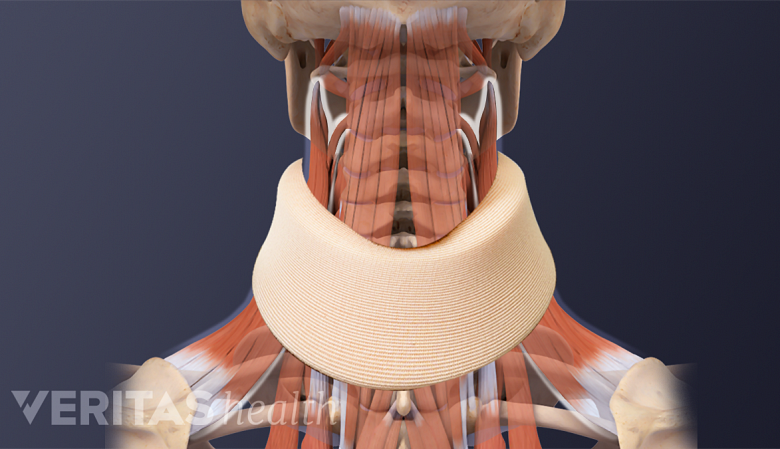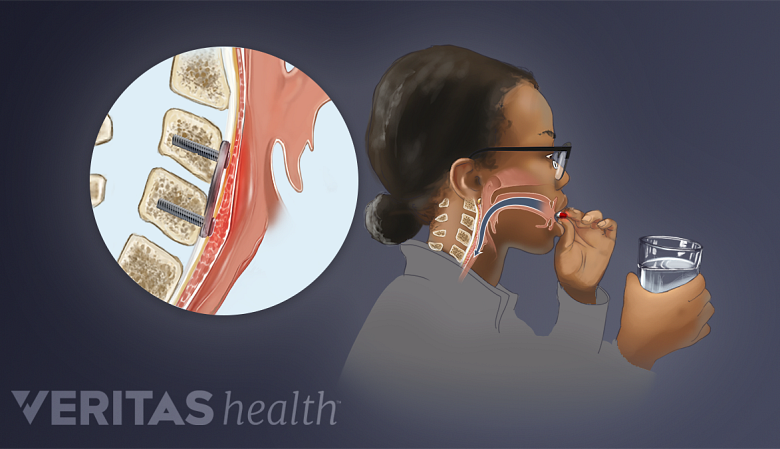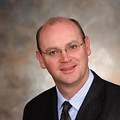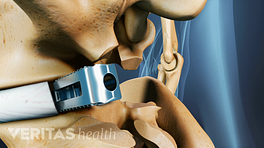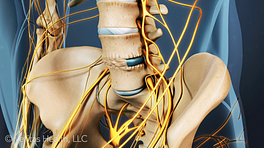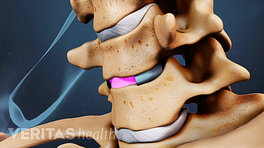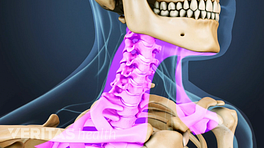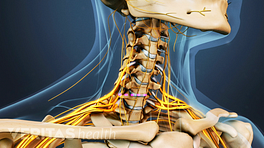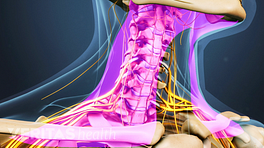It’s important for the patient to carefully follow the surgeon’s instructions for a smooth recovery after returning home after anterior cervical discectomy and fusion surgery, or ACDF.
In This Article:
- ACDF Surgery Postoperative Care
- Hospital Care After ACDF Surgery
- 1 to 2 Weeks After ACDF Surgery
- Pain Management at Home after ACDF
- 3 Weeks to 3 Months After ACDF Surgery
Activity Restrictions
A neck brace prevents excessive neck movement, aiding in healing and recovery.
Many typical household responsibilities require bending or lifting and should not be attempted. Yard work, cleaning house, and washing dishes fall in this category. Using paper plates and placing needed kitchen items in easy reach on the counter may be helpful. Many surgeons use a gallon of milk, which weighs about 8 pounds, as a guide for the maximum weight that can be lifted safely. Bagged dog food, cat litter, and items from big-box stores may be over this limit.
See Spinal Fusion Surgery Recovery: 1 to 4 Weeks After
Climbing stairs is usually allowed unless it’s uncomfortable. Most people do not need help with bathing and dressing, but situations vary. It may be easier to wear shirts that have zippers or button up the front, rather than those that go on over the head, for this initial recovery period.
The neck does not need to be kept still, but it should not be tilted from front to back, twisted, or moved quickly. If the patient has been given a neck collar or brace, the surgeon’s instructions should be followed closely.
Getting Needed Sleep
Sleep is a priority. For the first week, patients should get to bed early, sleep in, and rest often during the day. Getting at least 8 hours of sleep each night is ideal. By the second week, normal bedtimes and rising times can resume, but daytime rest may still be needed.
See Practicing Good Sleep Hygiene
Initially, some patients may find it more comfortable to sleep in a reclining position. If so, pillows may be used to prop up the upper back and shoulders in an inclined position, or the patient can try sleeping in a recliner or an adjustable bed.
See Pillow Support and Comfort
Sleeping on the side or back is recommended versus sleeping on the stomach. Adding a pillow between the knees when sleeping on the side, or under the legs when sleeping on the back, may be helpful. If sleeping troubles become a pattern, the doctor should be contacted.
Walking More Each Day
A daily walking program should typically begin the first week with walking about 1 or 2 blocks, and increase each day. Taking several walks throughout the day, every few hours, is best. Even short walks in the home can be helpful.
See Exercise Walking for Better Back Health
Rest is important, but too much standing, sitting, or lying down can lead to stiffness. Stiffness can be eased by changing positions at least once an hour.
Sexual activity is usually allowed in the second week, as long as it doesn’t cause discomfort. The patient should check with the doctor at the postoperative visit before adding other exercise to his or her routine.
Incision Care at Home
Showers are good for keeping incisions clean, but baths, swimming, and hot tubs are off limits because of the risk of infection. It is best not to point the shower head directly at the incision, but the incision can get wet. It is good to let soapy water run over the incision but not to scrub or directly wash the incision. Surgeons may have different advice for when it is OK to take a first shower; it’s usually about 2 to 3 days after the surgery.
Incisions should be gently patted dry and a new dressing applied daily for the first 5 days. Stitches are usually removed after 10 to 14 days.
When to Contact the Doctor
Persistent dysphagia beyond 4 weeks after surgery necessitates immediate medical attention.
Symptoms of an infection include an increase in redness, pain, or discharge, increasing pain at an incision site, and a fever of 101 degrees or higher. If any of these occur, the surgeon should be contacted immediately.
See When Back Pain May Be a Medical Emergency
Low grade fevers up to 101 in the first week after surgery are likely due to "lazy lungs" (atalectasis) and can often be prevented with coughing and deep breathing regimens and use of an incentive spirometer. An incentive spirometer after surgery will help you keep the lungs clear and will help keep the lungs active and working well during the recovery process. It will usually be prescribed for use every 30 to 60 minutes during waking hours.
Hoarseness, a sore throat, and/or difficulty swallowing (dysphagia) may still be experienced at this stage. These problems usually go away in 1 to 4 weeks, but can become more serious. Patients having trouble breathing or swallowing water should seek medical help quickly.
Other potential danger signs that should prompt a call to the doctor include, but are not limited to:
- Increasing pain
- Severe pain or pain with numbness, weakness, or tingling
- Problems urinating or controlling bowel movements
- Increased swelling of the ankles or feet
- Increased weakness of the arms or legs
